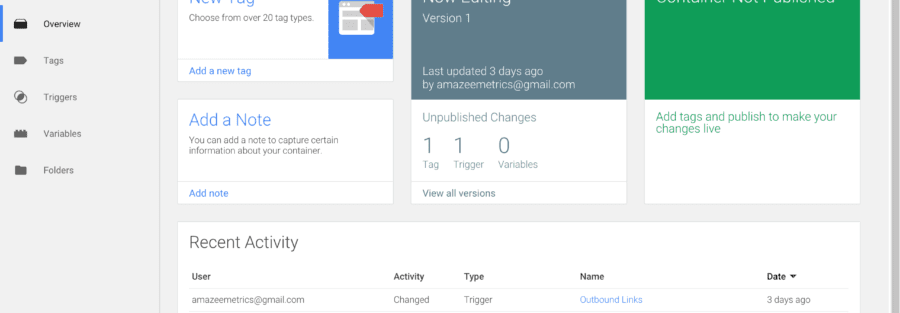If you are a non-coder and having difficulty in tracking events by manually inserting codes in each webpage of your website,”STOP IT RIGHT THERE”, incorrectly applied tags can distort your measurement and it can be time-consuming for the webmaster team to add new tags—leading to lost time, lost data, and lost conversions. Google Tag Manager provides all tagging features through which marketers will be able to add, edit or remove tags in without any help from developers and coders of your website.
Google tag manager is a powerful tool handling your website tagging with Google and non-Google website tags. It consists of features like :
- Asynchronous tag loading- fire tags faster without slowing user-part of the page.
- Easy to use tag templates, also support custom tags.
- Error-prevention tools like Preview and Debugging Mode.
- User access for multi-account to make it easy for large teams and agencies to work together with an appropriate level of access.
Before you start tracking events with Google Tag Manager, navigate to ‘variables’ section in your tag manager account and enable all ‘built-in variables’ of types: Pages, Clicks, and Forms.
Tracking Clicks on a Link
1) Navigate to Gtm account and goto triggers and click add new.
Name: ALL CLICKS
Choose Event: Clicks
Configure Trigger: All Elements
Fire On: All Clicks
Click on save.
- Navigate to publish drop-down button and select preview and debug option.
- Go to your webpage on which link is embedded and reload.
- You will see your web page in debugging mode of Google tag manager and right click on the Link you want to track.
- A gtm.click is fired and shown on google tag manager summary, click on it and goto variables tab.
- Under variables check for click classes or id of that link whichever is shown and note it down.
* Note: If you do not find any ‘id’ attribute for the link, you want to track, then you need to ask your developer to add this. Without id attribute, you can’t track clicks on a link through Google Tag Manager.
2) Now go back to Google tag manager and select that ALL CLICKS trigger and edit the details given below:
Name:
Choose Event: Clicks
Configure Trigger: Just links
Enable When :
Fire on :
3) Navigate to tags section and select new tag.
Name: GA-CLICK LINK
Choose a Tag: Universal Analytics
Configure Tag :
Tag Type: Universal Analytics
Tracking ID: {{Select Your Analytics ID}}
Track type: Event
Category: <> Action : << name action for the event>> Label : {{Page Path}} Non-Interaction Hit: True Fire On: select clicks and then the trigger “Track Download Link” you created before form the trigger list. *NOTE: Using Page Path as event label so that I can see the page of the on which link is clicked in the tracking reports. Set non-interaction Hit to ‘True’, so that event tracking does not affect the bounce rate of your website. 4) Preview your container if new tags are fired correctly by clicking on the link. 5) After checking publish your container new version for applying changes of gtm on your website. Analysing your tags event on analytics Goto to real-time reports and select events and see your events being tracked by gtm and report being sent to analytics. Events can be created in the goals so that saved data can be viewed later on by creating and naming your event goal fields similar you have created in GTM such as Category, action, label(optional). Goto Acquisition-> Goals Overview->select the goal event created



